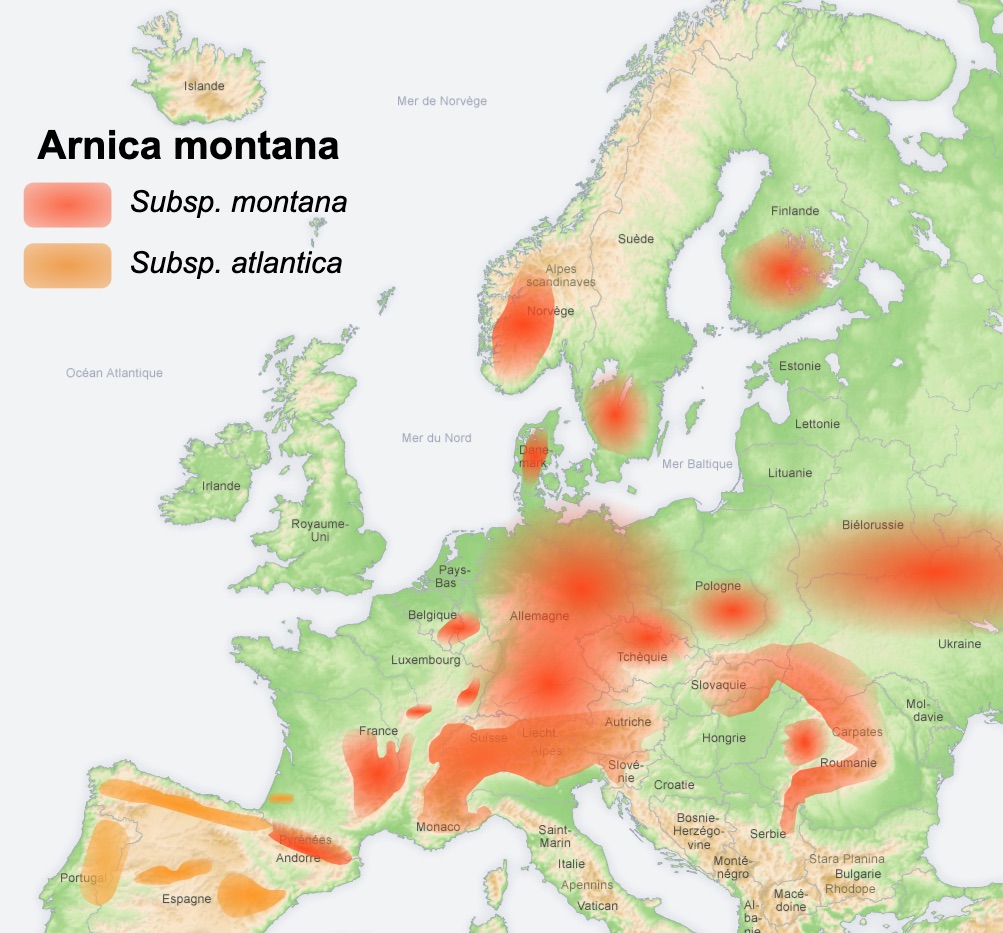Table of Contents
Symbiose
story bij de expo: vertellen over symbiose, symbiotische organismen (positief daglicht bacteria).
Vb lychen: onderzoek onder microskoop en het recreëren van een lichen op tak in zeer groot. (3D print?)
Symbiose in Soil: the VOSGES seen through its Soil, visualised by colours of bacteria and plants
In de 'Lab' sectie van de tentoonstelling: Een 'visuele plaatsbeschrijving' maken van Mulhouse en omgeving. De topografie visualiseren via kleur van de grond. De kleur wordt geëxtraheerd uit de lokale bodem via bacteria die leven in de grond, via planten die groeien in die lokale grond en die het resultaat zijn van de interactie van het grondleven.
Op deze manier wordt een lokaal kleurenpalet gecreëerd. En dat palet wordt gevisualiseerd in verschillende kunstwerken, met verschillende technieken, o.a. met textiel en Sensorial Skins gegroeid door bacteria.
- soil bacteria (healthy soil) die kleur afgeven. Casestudy: o.a. Grès des Vosges (rose). Soil study omvat ook een research naar lokale wilde planten, symbiose plant/aarde</hi>.
- wilde en medicinale planten geven ook goede verfstoffen. Casestudy: Arnica (July).
research with University Strasbourg: visualisering van de topografie via kleur
sol / bacteries / couleur
Le Vivant (plantes, bacteries) + leur lien avec les couleurs
Making the invisible visible
Translation / Transitions / transformations
Liquid / solid – state of materials – organic & anorganic
Spectrality
- Welke lokale medicinale en /of verfplanten groeien in de Vosges? Welke nuttige stoffen zitten er in Arnica? Kunnen er kleurstoffen aan onttrokken worden? Hebben de bacterieën in de grond waar de bloemen geoogst worden invloed op de nuttige stoffen? Ph?
- Welke interessante lychen vinden we in de Vosges? Zijn er pigmenten aan te onttrekken?
- verschillende grondstalen onderzoeken op bacteria en kleur. Vb. Wordt de oud-roze kleur van de Grès des Vosges veroorzaakt door pigmenten van de bacteria in het gesteente?
methode:
Pigmentextractie van de grond, van bacteria in de grond, van symbiotische organismen in de grond (lychen), van planten die groeien op bepaalde grond, … alchimie, chemie en biologie.
Comment étudier les molécules des plantes? mp4 - movie Strasbourg
Claudy Jongstra
visualisaties
- Performance: Weefwerken met publiek: groot weefraam in de tentoonstelling waarop werk stilaan vorm krijgt (⇒ welk textiel basismateriaal gebruiken om te verven?)
- Performance: Patchworks Sensorial Skins: tijdens de duur van de expo groeien de werken aan: Sensorial Skins geverfd met lokale verfplanten . Stilaan worden grote Skins opgebouwd door nat aaneenzetten of door stikken
- Winogradsky columns: (check input & collab NA!) Winogradsky columns are model microbial ecosystems prepared by adding pond sediment to a clear cylinder with additional supplements and incubated with light. Environmental gradients develop within the column creating diverse niches that allow enrichment of specific bacteria.
- met de microbiologen werken op visualisaties van de inhoud van de grondsamples, met de SEM (dood bacterieel materiaal) en met de lichtmicroskoop (van het levend bacterieel materiaal). Selectie maken van interessante onderdelen (bacteria, soil micro-organisms, tardigrades, lychen, cyanobacteria, plantenonderdelen, grondsamples). Stills en video.
- Van de stills (SEM en lichtmicroskoop) prints maken bij Princubator Mulhouse.
study of Arnica montana

Arnica - Prairies des Vosges
wikipedia Arnica montana
Arnica montana grows in nutrient-poor siliceous meadows or clay soils. Arnica does not grow on lime soil, thus it is an extremely reliable bioindicator for nutrient poor and acidic soils. It is rare overall, but may be locally abundant.

planning residenties Kunsthalle Mulhouse
- eerste residentieperiode: eind juni / begin juli: oogsten van de Arnica bloemen in de Vogezen rond Mulhouse.
- tweede residentie periode (october): opzetten van een Winogradsky column met verschillende grondsoorten uit Mulhouse en omgeving. Samenwerken met Solinest/NA! voor dit werk, op voorhand en daarna in de tentoonstelling zetten?
werken in expo
- opzet van een klein, geësthetiseerd labo (werktafel, erlemeyer flessen) met lokaal geoogste verfstoffen uit planten en aarde.
- in groot aquarium op grote sokkel een grote sensorial skin groeien. Acetobacter xylinum. Oogsten en verven tijdens performance.
- Mulhouse textiel industrie: bepaalde stoffen (Kelch) die in workshop geverfd worden en aaneengezet tot groot geheel.
- prints maken voor de tentoonstelling: fotoos SEM (soil bacteria, plantencomposieten, stoffen en delen) op textiel printen
pigmented bacteria
Conference non-human agents, art laboratory Berlin (2017)
http://www.artlaboratory-berlin.org/html/de-event-40.htm
Ted Talk - How Bacteria Talk:
https://www.ted.com/talks/bonnie_bassler_on_how_bacteria_communicate
Bacterial dyes in Fashion:
https://www.asm.org/index.php/general-science-blog/item/6929-bacterial-dyes-in-fashion
https://issuu.com/kukkadesign/docs/living_colour-ibook
Janthinobacterium lividum (Indigo):
https://en.wikipedia.org/wiki/Janthinobacterium_lividum
Streptomyces coelicolor (blue):
https://microbewiki.kenyon.edu/index.php/Streptomyces_coelicolor
Bacteria and Art:
https://microbewiki.kenyon.edu/index.php/Bacteria_and_Art:_Creation,_Deterioration,_and_Preservation
Living Color: Bacterial Pigments
http://journals.plos.org/plosbiology/article?id=10.1371/journal.pbio.1000510
Streptomyces coelicolor, faber futures
Streptomyces have a life cycle similar to that of fungi. The cycle starts with growth of vegetative mycelium from a spore, followed by ariel mycelium, and, then, spores.
Faber Futures - textile dyeing with bacteria
https://colorscultures.sciencesconf.org
Sämi LUDWIG / PU1 anglais / Membre d'ILLE (4363)
Institut de recherche en Langues et Littérature Européenne
Université de Haute Alsace - UHA / Mulhouse (F)
10, rue des Frères Lumière / F - 68093 MULHOUSE Cedex
Textiles and Dyes in the Mediterranean Economy and Society - purple dye production